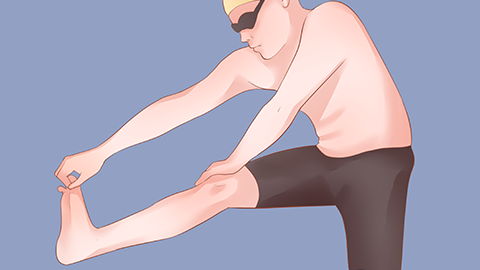How to return to normal after leg cramps and persistent pain
Generally, persistent pain after leg cramps may be caused by muscle strain, cold exposure, electrolyte imbalance, peripheral artery disease, rheumatoid arthritis, and other related factors. Patients can visit a reputable hospital to choose general treatment, physical therapy, medication, and other methods to restore normal condition. Detailed explanations are as follows:
1. Muscle Strain
Intense muscle contractions during cramps may cause minor damage to muscle fibers, resulting in continuous pain. Avoid strenuous activity after cramping and gently massage the calf, pushing from the ankle toward the knee. Apply a cold compress wrapped in a towel for 15 minutes each time within 48 hours to relieve pain.
2. Cold Exposure
Cold stimulation can worsen the inflammatory response following muscle spasms and prolong pain. Keep the calf warm, wear thick pants, and avoid direct exposure to air conditioning or fans. Soak feet in warm water at around 40°C for 20 minutes to improve local blood circulation.

3. Electrolyte Imbalance
Excessive sweating or an unbalanced diet may lead to deficiencies in electrolytes such as potassium and calcium, which can impair muscle recovery and intensify pain. Consume more electrolyte-rich foods like bananas, milk, and spinach. If symptoms are significant, oral rehydration salts III, potassium chloride sustained-release tablets, calcium gluconate oral solution, and other supplements may be taken under a physician's guidance.
Narrowing of the leg arteries can lead to insufficient blood supply to muscles, delaying recovery from cramp-related pain and causing coldness and numbness in the legs. Under medical guidance, patients may take medications such as aspirin enteric-coated tablets, clopidogrel bisulfate tablets, and cilostazol tablets. Engage in appropriate walking exercises to promote blood circulation.
5. Rheumatoid Arthritis
Inflammation affecting joints and surrounding muscles can intensify pain after cramps, accompanied by joint swelling and stiffness. Under a doctor's guidance, medications such as diclofenac sodium enteric-coated tablets, naproxen tablets, and ibuprofen suspension may be used for relief. Rest adequately and avoid excessive leg strain.
In daily life, maintain a balanced diet rich in protein and vitamins. Warm up thoroughly before exercising and avoid sudden strenuous activity. If pain persists for more than three days, seek timely medical evaluation.




